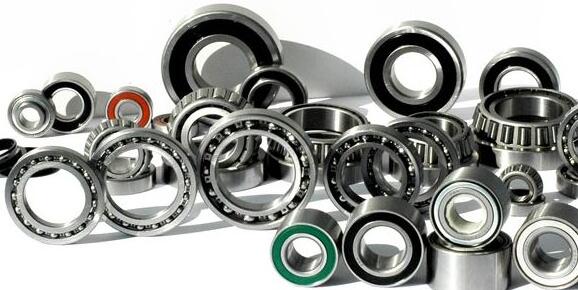PRODUCT CATALOGUE
How to measuring and choosing the right bearing types?
Date: 2018-09-05 10:02

When you need to replace bearings on equipment, it's important to take care to ensure that you know the exact bearing you need. The following guide will help you to identify the type of bearing you need, and get an understanding of the different types available.
Checking the reference number
The quickest, simplest way to be able to determine which bearing you need is to look at the reference number. Most modern bearings have this reference number engraved by laser on the actual bearings themselves, but these are often rubbed off over time due to wear and tear. If you aren't able to read the reference number you require, then it may be necessary to measure it manually.
Measuring bearings
This is the process you will have to undertake if it isn't possible to read a bearing reference number. It's vital that you determine the correct type accurately, so there's little margin for error here.
The best way to accurately measure the dimensions of a bearing manually is to use a tool called a vernier caliper. If you don't have one of these, it is possible to simply use a ruler, just take extra care to ensure you are measuring precisely.
The dimensions you need to determine for a bearing are the width, the diameter of the inside and the diameter of the outside.
Once these dimensions have been accurately measured for the bearing, you need to find the appropriate bearing to purchase. The three main kinds of bearing are as follows: roller bearings; ball bearings; needle bearings.
Roller bearings
A roller bearing is a form of rolling-element bearing that utilises cylindrical rollers to keep the bearing's moving parts separated. Its purpose is to limit rotational friction while supporting radial and axial loads.
Ball bearings
A ball bearing is another rolling-element bearing, but it uses balls to separate the bearing races instead of cylindrical rollers. It also helps to minimise friction while supporting radial and axial loads.
Needle bearings
A needle bearing is another take on the rolling concept, this time using a series of long, thin cylinders as rollers which have a resemblance to needles. Once again, their function is to minimise friction on a rotating surface.
Using bearing suffixes
Once you have collected all the dimensions of your bearing by measuring, either with a vernier caliper or a ruler, you can use them to perform a search to find the correct bearing for your needs.
With the correct bearing identified based on measurements, there are further options to choose from. Firstly, all bearings have a seal that covers either side of the unit, which can be identified by a suffix. If the suffix reads ZZ or 2Z, the bearing has two metal shields. If it reads 2RS1, 2RSR or DDU then it has two rubber seals.
Furthermore, all bearings are given a clearance value. This feature gives the bearing space for expansion in the area between the bearing races. It thus adds a limited amount of play between the two rings.
This is useful, for example, if a bearing is liable to get hot when in use. The built-up heat will require room to escape, otherwise, there is a risk that the bearing might fail. The following markings indicate how much clearance a bearing has:
- C4: This means the bearing has the greatest clearance.
- C3: This means the clearance is above the international standard.
- No Marking: This indicates the clearance is standard.
- C2: The clearance here is below the international standard.
When measuring and choosing your bearing, it is vital that you are precise. If the reference number is illegible, then it's down to your measuring to ensure the correct bearing size is identified. If you follow the instructions in this article, you will identify your bearing accurately and be able to choose the right replacement when shopping online.
- Preview:Angular Contact Ball Bearing
- Next:Spindle bearing


